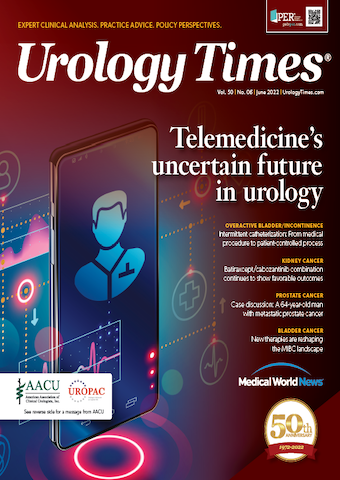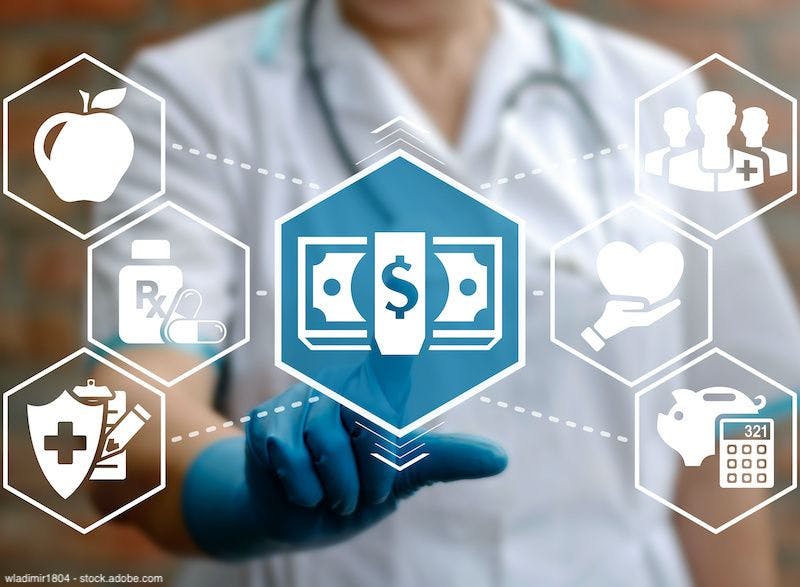Publication
Article
Urology Times Journal
How do you bill for a 75-minute audio-only E/M visit?
Author(s):
"As for the case described of a 75-minute audio-only E/M visit there has been no specific coding guidance provided by CPT," write Jonathan Rubenstein, MD, and Mark Painter.
Jonathan Rubenstein, MD

My provider asked me how to code a prolonged audio-only evaluation and management (E/M) visit in which they spent 75 minutes with the patient by phone. Since the visit was performed with audio only, we are aware that standard outpatient (face-to-face) E/M codes 99212 through 99215 would not be used, and we know that CPT code 99443 is for a phone visit of 21 to 30 minutes. Is there an add-on code that can be used in a circumstance such as this to report the additional time over the 30-minute mark? Thank you.
Mark Painter

You are correct that audio-only (telephone) E/M services would not use “Office or Other Outpatient Services” (CPT codes 99202-99205 or 99211-99215), but rather are reported using CPT codes 99441-99443 based upon the amount of time of medical discussion (5 to 10 minutes, 11 to 20 minutes, and 21 to 30 minutes for CPT codes 99441, 99442, and 99443 respectively). (Note: for the purposes of this question, we are excluding the Centers for Medicare & Medicaid Services Healthcare Common Procedural Coding System [HCPCS] codes G2012 “virtual check-in, 5 to 10 minutes of medical discussion” and G2252 for “11 to 20 minutes” of medical discussion). Note also that CPT codes 99441-99443 have limitations for reporting and can be submitted only if they are “not originating from a related E/M service provided within the previous 7 days nor leading to an E/M service or procedure within the next 24 hours or soonest available appointment” because otherwise the encounter is considered part of the previous E/M service or preservice work of the subsequent visit. Again, for the purposes of this question, we are assuming that this interaction is reportable as it does not meet the exclusions.
As for the case described of a 75-minute audio-only E/M visit there has been no specific coding guidance provided by CPT. When the audio-only CPT codes were created, it was likely not anticipated that there would be occurrences of such prolonged audio-only E/M visits. We then need to look at other codes that can be used in situations such as this and have come up with 2 options: Prolonged service codes (such as CPT codes 99354 and 99355, which describe “Prolonged service with Direct Patient Contact”) and add-on CPT code 99417, “additional 15 minutes”.
CPT codes 99354 and 99355 are described as used for additional time of services with direct patient contact except with Office or Other Outpatient Services (CPT codes 99201-99205 or 99212-99215). Since audio-only codes are not these types of services, they are not specifically excluded from being added to audio-only E/M services. These codes can be used when the extra time exceeds 50% of the listed time, which means CPT code 99354 (first hours additional time) can be reported only when 30 additional minutes are spent.
CPT code 99417 is an add-on code to report prolonged Office or Other Outpatient E/M services above the maximum time if reporting using time. The advantage of this code is that it can be billed in 15-minute increments for each additional 15 minutes of time and audio-only E/M codes are in spirit being used as Office or Other Outpatient services. Unfortunately, it is unclear whether it will be accepted if added on to 99441-99443.
Therefore, although there is no specific correct answer to this question as there is no specific guidance for how to report such prolonged audio-only visits, one could try reporting either CPT codes 99443 plus 99354, or CPT codes 99443 plus 99417 x 3. There is a compelling argument for each, but ultimately the actual payment may be at the whim of the insurer.
Questions of general interest will be chosen for publication. The information in this column is designed to be authoritative, and every effort has been made to ensure its accuracy at the time it was written. However, readers are encouraged to check with their individual carrier or private payers for updates and to confirm that this information conforms to their specific rules.

Newsletter
Stay current with the latest urology news and practice-changing insights — sign up now for the essential updates every urologist needs.




























